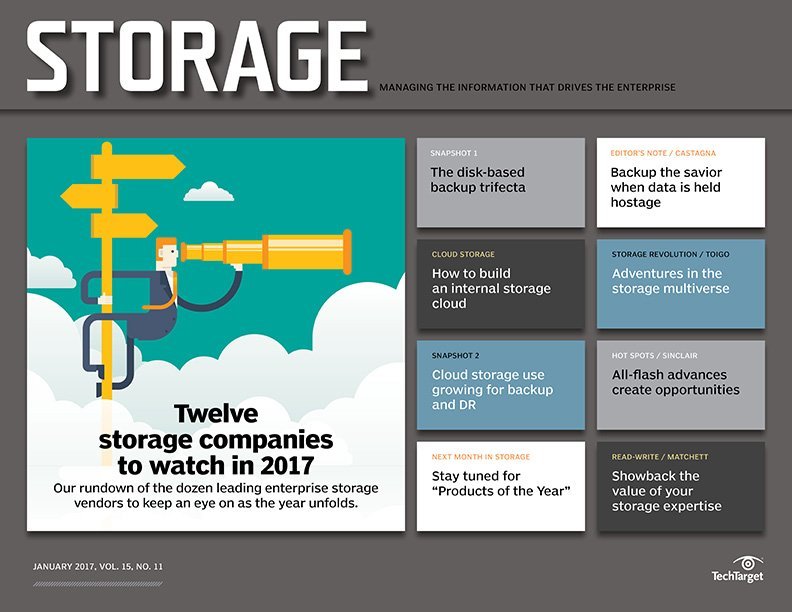PRO+ Premium Content/Storage
Access your Pro+ Content below.
How to build a private storage cloud

This article is part of the Storage issue of January 2017, Vol. 15, No. 11
The delivery of storage as a service has advanced considerably over the years. Today, public clouds like Amazon Web Services and Microsoft Azure offer object storage on demand for internal and external connectivity, as well as block and file storage for internal assignment to compute instances. This operational flexibility would be highly attractive in the data center, offering convenience and agility well beyond traditional methods of storage deployment. How do you go about building your own private storage cloud? To start, let's take a step back and review what cloud computing really means. The standard definition of cloud covers the following characteristics: elasticity to grow and shrink consumed resources; delivery as a service, a standard set of service offerings defined in abstract terms rather than on physical hardware; multi-tenancy to support multiple clients; on-demand access for requesting resources with little or no manual intervention; and reporting and billing, with detailed reports for charging based on ...
Features in this issue
-
Top enterprise storage vendors to watch in 2017
Check out our comprehensive forecast of what challenges and opportunities the top enterprise storage vendors are expected to face in the coming year.
-
How to build a private storage cloud
Building internal cloud storage must account for elasticity, choosing the right platform, allowing for workflow, and stack deployments and public cloud integration.
Columns in this issue
-
-
All-flash array market advances outpace demand, create opportunities
Scott Sinclair says high-density, high-capacity all-flash storage arrays are a disruptive technology ahead of customer demand for now, but businesses will realize they need it.
